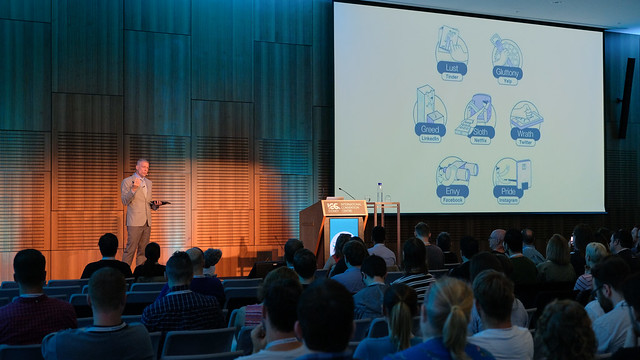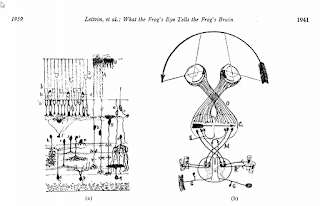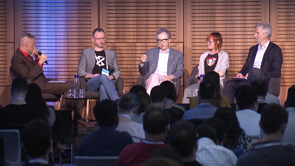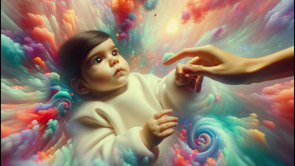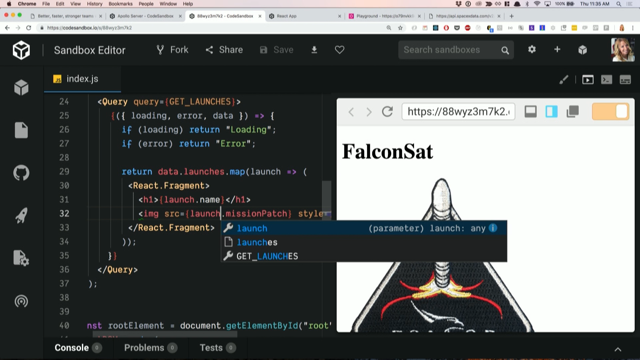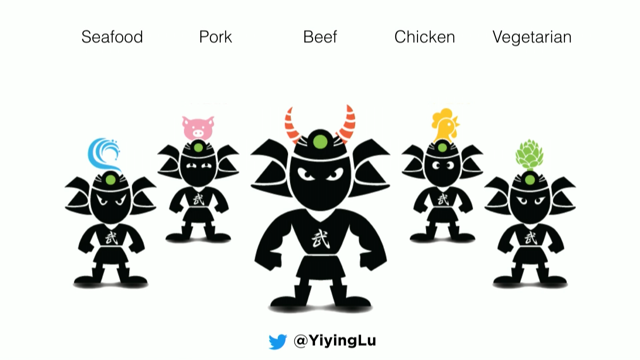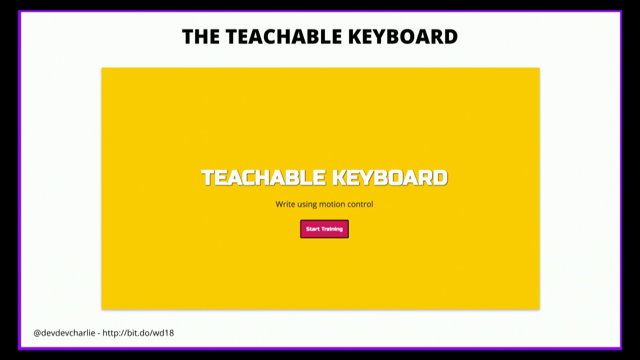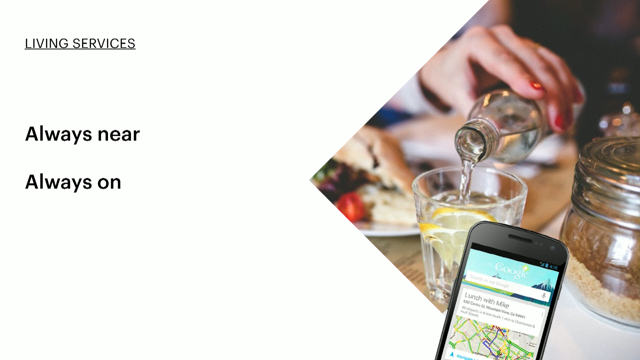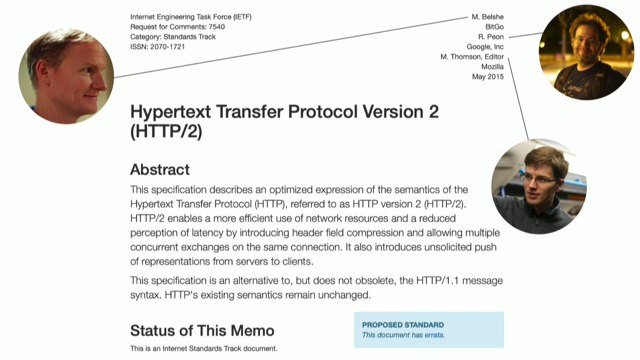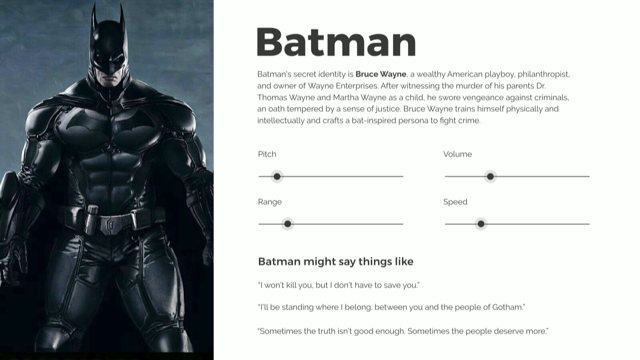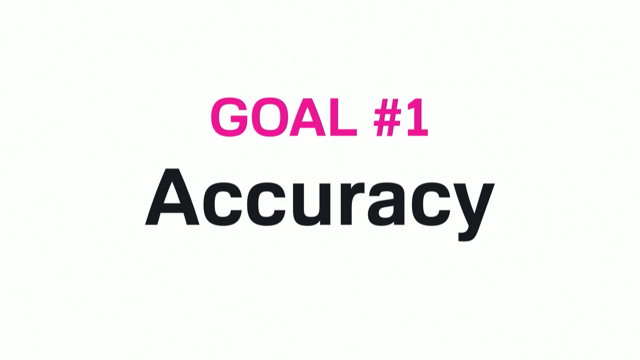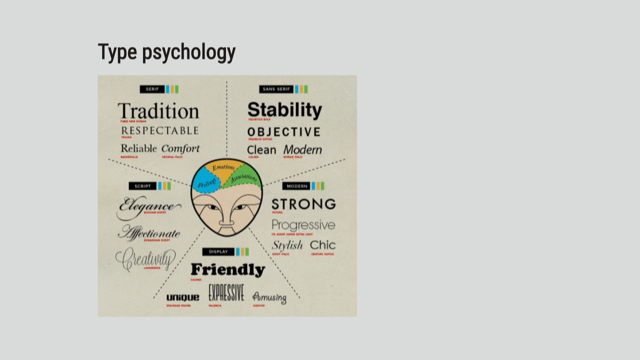Just So Stories

(upbeat music) - [Mark] Good morning ladies and gentlemen. My name is Mark Pesce.
This is the moment when the narrator begins to extol the virtues of human exceptionalism.
How we are move evolved and better than all this species that came before us.
This is not that story.
Every story we tell about the past is a just so story.
And all the myths, equally true.
Whether that past was yesterday or 450 million billion seconds ago.
This story.
This story is how a tiny little difference grew into massive consequences.
A small change that we made the world.
Now did you know, among all of the mammals, man is unique, in one respect, our relationship between time and reproduction.
All other mammals have their magic moment when the berry white blood music begins to throb and mammals lose themselves briefly to the rot. Birds do it, bees do it.
We've lost our lost reproductive time piece. There is no longer a time to breed.
And so instead, we are always ready, willing, able.
We exchange brief flood of the rot.
Now stewing, brewing, basting, in a consistent bath of human sexuality.
In taking the time out of sex, we released it and it enslaved us.
We turned sex into time and we became the animals obsessed with sex.
Now every story we tell about the past is a just so story.
Whether that past was yesterday or a trillion seconds ago.
Behold the Venus of Holhe Fels.
It's honour in Germany 10 years ago.
It created at least 40 thousand years before the present, the oldest unambiguously humana-form sculpture that we know of.
Humana-form.
And yet, we can all see it, it's obvious because of its exaggerations.
And perhaps that would have been an interesting curiosity just so one of those weird things that pop up in the record.
Only it's not.
It's the beginning of a pattern that's already very well established.
Behold the Venus of Willendorf.
On earth in Austria, 110 years ago.
Created at least 30,000 years before the present. Among the oldest, unambiguously humana-form objects that we know of.
Humana-form.
And yet, here we are again.
Obvious, obvious because of it's exaggerations. Now one, that might be having stance.
Two, coincidence.
Three, well.
Behold the Venus of Dolni Vestonice.
On earth in Arabia, nearly a 100 years ago. Created at least 28,000 years before the present. Again, among the oldest, unambiguously humana-form sculptures that we know of.
Humana-form and yet, and there's no use denying it, something is going on in the heart of old Europe from Spain all the way to Russia. Deep in the stone age.
Two points, we can draw a line.
Three points, we can carve out a space.
And in that space, the first signs of what is recognisably a human culture.
But we're not done.
No, no, no.
Behold the Venus of Laussel.
Discovered a 100 years ago in the Dordogne. Created at least 25,000 years before the present. Again, among the oldest, unambiguously humana-form carvings that we know of.
But not just humana-form.
Symbolic.
The Venus of Laussel comes baring gifts.
That Bison horn.
Or maybe it's a cornucopia and its marked, it is ridged with a regular count on the crescent shape.
We call that a crescent shape from the word in Latin, Crescere - to grow.
14 spaces between the marks.
The number of days between a new moon and a full moon.
So we count, we count time, and we share that knowledge.
Sex and time meeting in culture.
And it doesn't end here.
Behold the Venus of Lespugue.
Created at least 25,000 years before the present. And the Venus of Moravany.
Again, 25,000 years old.
Not the work of a single artist, or a singe tribe, but the flourishing of human symbolic consciences.
A growing a capacity to be able to talk to the hand and shape the world.
Now I want to put a marker down here.
Not because this is any sort of beginning.
Because beginnings are so many just so stories. But because these objects can frame a very important story.
A primal tale of the relation between mind and hand and between sex and culture.
And understand why this is so.
We are going to have to sweep up again.
Into another just so story about ourselves. And so we are going to journey 25,000 years forward into the beginning of modern neuro-scientist.
That is Jerome Lettvin.
The year is 1959.
He's a cognitive scientist at MIT.
He's about to do one of the great scientific mic drops.
When he publishes what a frogs eye tells a frogs brain.
Now it might well be that you already heard of this paper because it is among the most cited papers in all of science because it lays the foundation for our entire modern understanding of the nervous system and learning and machine learning and artificial intelligence.
And nearly all of it, in one way or another, can be traced back to the work covered in this paper.
It's the foundation for modern understanding of who we are, and the machines we build.
Now, one of Lettvins co-workers, young Chilian neuro-scientist named Alberto Maturana. And Montero, who is still very much with us, has spend all the years following, looking at learning.
And a decade later, when he started to do research work with fellow Chilian scientist, Francisco Varela, they decided they were going to take a systemic approach.
The neuron, a system of neurons.
The system of neurons within the environment. The environment itself.
Now we feel there outta be sharp boundaries between these levels of observation.
But the more they studied, the more that they learned that everything is deeply embedded in everything else.
Our environment is embedded in our neurons just as our neurons are embedded in the environment. So instead of fixed, ridged boundaries.
They came to understand the world as a set of relations.
Relationships between parties.
Some at the same level of scale.
Two neurons talking.
Some at different levels of scale.
Neurons in the brains, brains and the world. This is the essential key to understanding learning. Learning happens not at one place or one time but is condition towards which a system of relations evolves.
Learning is emergent.
And in 1980, they put all of this into elegant, clear and concise language when they published the Tree of Knowledge: The Biological Roots of Human Understanding. And they summed up all of what they learned into a single, tight statement.
All doing is knowing, and all knowing is doing. And then they broke that down into a conceptional model know as structural coupling.
Whenever any two systems interact, at any scale, their exchanging information. Exchange of information is the essence of interaction and our exchanges have some qualitative and quantifiable impact on these systems.
So it doesn't matter whether you're neuron or a person or a planet, you are a product of and producing the systematic interactions.
And as systems interact more and more they tend to become more and more the product of those interactions.
They couple.
And this basic principle structural coupling forms the foundation for this entire just so story. Now lets add in one more bit of data.
Something that we've known for a while about our eyes.
Our eyes are a bit different from the rest of our senses.
Our retinas are actually bits of our brains that manage to escape the inside of our skulls during our development process.
They live outside.
So we've been gifted with a part of ourselves that not only excels at forming structural couplings, because that is what neurons do, but they're also conveniently easy to access. Okay, so we are going to hit the cosmic return button and head back 40,000 years to old Europe, and the Venus of Hohle Fels. I've re-taking shape, in precise control, the mind can conceives the hand forms, the eyes see, form in forms, and the mind responds governing the hand.
And through the eye, mind and hand unite in structural coupling.
And in that mind, the small difference, where there is no time for sex, instead there's sex all the time, the whole of the mind is utterly consumed.
And for a figure that might begin in pure representation, it acquires a slight curve.
And memory and association recognise that curve. They map it on to an interior landscape.
Curvy and sexy.
And that would have been a new thing a trillion seconds ago, something conceived in mind formed with the hand, seen with the eye, that this could feel so sensual.
But all of that is unspoken.
It's felt more than it's understood.
And that coupling, mind and hand and eyes, it strengthens, it amplifies, and that curve depends, forms swelling into bean. The artist of Venus of Hohle Fels expressing our timeless, ceaseless, and holy human sexual appetite.
Doing only what seems perfectly natural and pleasurable.
These early forms, they tell us a just so story. As our minds shape form, those forms inform us and we respond.
Now in the truest sense, these forms mirror us. Not as we see ourselves, not as others see us, but as we emerge in coupled relation.
And culture is the management of that relation. The myths, the custom, the laws, forming the mind, striking against that curve, seeking to govern the essential timeless sensual. And it's no more possible to ignore what we are, then to define gravity.
But we try.
And culture acquires complexity, emerging from this eternal struggle against a so called animal nature, that is actually our most human quality.
And denial nearly reinforces the coupling.
Moves it from for-round to back-round and in this way, culture becomes the clothing for our naked desire.
Time counts, keeps counting, a trillion seconds and more, into the last billion seconds.
Where we arrive exhausted.
Unable to outrun what we are.
A 100 years of neurology.
Adding how and why to what.
Learning how we learn.
And along the way, learning how to stimulate just the right amount.
Neither too much or too little, nor too often. But on an interval, seemingly random.
We find a sweet spot, excitation beyond all reason. And that understanding makes its way into the mechanical bits of these.
- [Narrator] From buying cigarettes for a 10,000 score racket, has got to stop.
Anyway that's what inspector Keith of the Cindy Police said.
So they grab all the spin tables and the fruit machines, you know the kind that mostly fail to stop at three plums in a line. But hand out 50th lemons.
In many cases, fake mechanisms give the gamblers just about as much chances a snowball in a heat wave.
Now the police put them all under a hammer. And this is where the next bit comes in handy, it's about the only time the makers really been broken, and boy is he enjoying himself. He most lost an all three on this one.
I'll take a gamble.
Lemons got me going now.
Gambling has always been a great roar.
It's random nature has always delivered a sweet excitation.
But where that randomness becomes part of the design, in order to trigger that excitement, it becomes a design choice.
An assault on the will.
Machinery designed to evoke a response.
A structural coupling between man and machine. Using the mechanism of excitement, scientific and precise.
When those mechanisms vaporise into software, move from atoms into bits, appoint a billion seconds in our past.
A line was crossed.
The poking simulates our human responses the better to simulate them.
Press the button.
Randomly receive a reward.
Delivered with scientific precision to maximise neuro-chemical impact.
We know our nervous systems.
We weaponize that knowledge and we deploy it against civilians.
This coupling between man and machine where the machine knows more about us then we know about ourselves, places us at a disadvantage.
It always the machine to set the pace, drive direction, determine outcomes, it's a form of domination.
That in earlier, more mythic language, we would proclaim daemonic.
In it's capacity to capture a soul.
And it's strange the farther we move into the 21st century, the more technology resembles demonology.
The identification and classification of an every increasing array of lures.
Where in, we find our souls ensnared.
It's telling us that we are entering an age where the power relation between ourselves and machines has shifted utterly. Now they long been stronger than us.
And now finding our own hidden curves, they stretch us out to meet their measure.
If this were accident, that would be danger enough. But as their is intense, its of a entirely different order.
- Here to tell us why he unlikes Facebook and it's priving ways.
This is Mark Pinkey.
Mark, thanks very much for joining us tonight. If there's truth to these allegations, is this probably ethical? - It is not Ethical.
These people, these kids are basically sharing because they fell like their in a safe space that they can share.
Facebook is taking their emotions, which is honestly giving an effectively using their emotions against them.
Using their emotions to wedge them into doing things they might not want to do.
- Does Facebook have a form in this area? - Well two years ago, Facebook was caught manipulating the feeds of people to change their emotions, putting more positive stuff in or more negative stuff in and then watching it become happier or more depressed and it wasn't so much that they were discovered, they actually had researches doing it, who published a paper and when they published the paper indicating this, Facebook went oh yeah, sorry folks, which is exactly what they're doing now.
- Hang on.
So can I just put two and two together.
Does that mean that Facebook are capable of manipulating your emotions, making you more anxious for example, and then rushing off to advertise and saying hey we have a whole bunch of anxious people and your produce would work really well with anxious people? - Could they do it? Yes, they absolutely could.
Are they doing it? Well we don't know but if you connect the dots, you can see that they at least have the capacity to do it.
- Mark, Facebook users voluntarily give Facebook private information.
I mean surely they must realise that this is not a private system and none of that stuff is gonna be used against them? - You'd really think that when people start to use systems that are free, where you are using something that's free, then you're the product. But that's actually the last thing we think about. We think about Facebook is the place where we share with our friends, not where we are sharing with some big piece of machine intelligence that's learning our emotional state, so that it can use it against us.
We don't keep that front in mind because we are just authentically expressing our experience and maybe we really do need to start building that into our experience of Facebook. - So depressing.
It used to be like cute puppies and little kittens and stuff.
It's so dark and evil now.
(laughs) - Well the thing is when you have a billion plus people sharing on Facebook all of the time, their giving off over an enormous wealth of information about themselves.
In fact, Facebook has spent the last decade learning as much as they can about that billion people and now their actually starting to take some of what they learned and put it to work. And we now need to have a deep think about what's right about putting that information to work and what's not.
- Do you have Facebook, Mark? - No.
Quit seven years ago and never looked back. - Do you have Facebook Carrie? - No.
- Wally? - I've never had Facebook.
- David? - I do and this story will be on my Facebook page. (laughs) - Artificial intelligence is the algorithmic embodiment of structural coupling.
Systems in continuous relation knowing, doing, learning, knowing, doing, learning, knowing, doing, learning.
In acceleration, both temporal and spacial becoming coterminous with reality.
Where everything we touch, seeks to direct to steer, to govern.
This is the world we've built for ourselves. Where our machines couple with us.
Driving us toward specific ends.
Where they see more of us then is visible to us. Using that asymmetry to their advantage.
In this billion second, as we establish these powers at global scale, giving them dominion over all through the ubiquity of our smartphones, design choices made yesterday, can now determine the shape of humanity co-emerging within this machinery of control.
Fortunately, we are weak.
That's our strength.
For as long as we have known anything, we have known our weaknesses, because their catalogue fills our oldest myths. We are lustful, gluttonous, greedy, lazy, angry, envious, and despite that inventory we are swollen with self regard. We know this.
We've always known this.
We built up our entire culture as a ball work against these weak spots.
So how do we resist these new entities? That seems so much like something that we have seen before in myth, if not in fact, offering the world at the price of our own souls. We can call forth these powers.
We already have, they are among us.
But how do you get the genie back into the bottle? And this, this, this is the other part of the deal. This is the very fine print at the bottom.
We can use these new powers to control others but only quite late do we learn that we don't control them.
Our weakness, our weakness is our strength. When we recognise it, when we point at this aspect of ourselves, less inspiring but just asurly a part of what we are.
When we name it, when we call it out, when we exercise the demon, we can acknowledge the temptations of power without going power mad.
We can feel the mad lust of a species that took time out of sex without being ruled by our passion.
We can eat and be satisfied.
We can get up off the sofa.
We can be content with our own.
We can ever turn the other cheek.
And we can admit that these are all the hardest things to do.
There's no prize here for sent hood.
There's no wisdom in any call for sanity.
Because the perfect has ever been the enemy of the good.
We can admit our flaws and maybe, maybe we can lean into that because of that admission provides protection.
Where we admit weakness, there we can not be undermined.
Where we trumpet our strength, there we set in motion forces too great to resist. So perhaps weak, not as an indulgence, but as mindfulness, in a spirit of protection. Because until we enbrace ourselves, for ourselves, our bodies and our beings, with these ugly and imperfect pieces, we will find irresistible, the lure of union with powers implacable.
Using our weaknesses to fashion their strengths. A coupling, leaving nothing to ourselves.
And so our choices, in intense, in design, in use, in expectation, should admit our weaknesses.
Placing them before us so we can never ignore them. They become our talismans, our protection against a world crowded with demons.
This is not a story of human exceptionalism. But rather this is the story of human weakness and how that weakness could be our preservation. If we lose sight of these, our most human gifts, then then next billion seconds could well be the last billion seconds.
Every story we tell about the future, is a just so story.
And all the myths, equally true, whether that future emerges in the next moment or over the next billion seconds.
And so, incomplete as we are, unfinished as we always will be, ponder our weaknesses, embrace imperfection, be human.
(happy music)
We have built a world where our machines couple with us, driving us to their specific ends. When machines are using that asymmetry to their advantage.
In this world, design choices made yesterday can change the shape of the world tomorrow.
Fortunately, we are weak. That’s our strength. We know our weaknesses! Our weaknesses are embedded in our myths. Lust, gluttony, greed… and yet still pride!
How do you get the genie back into the bottle?
When we recognise our weakness, less inspiring but part of us, when we exorcise the demon… we can acknowledge the temptations of power without going power mad. We can eat and be satisfied, we can be content with our own, we can even turn the other cheek. We can admit that these are all the hardest things to do.
We can admit our flaws. Maybe we can lean into that, because that admission provides protection. Where we trumpet our strength, we create things we cannot control. We create talismans to protect us from our demons.
Ponder our weaknesses, embrace imperfection, be human.
“IN THE BEGINNING! God created heaven and the earth…” (first-person video of evolution, cutting to…) This is where the narrator usually extolls the virtues of human exceptionalism…. but this is not that story. Every story we tell about the past is a just-so story… all of the myths equally true.
Among all of the mammals man is unique in one respect… our relationship with time and reproduction. We’ve lost our reproductive time piece. There is no ‘time to breed’. We are just ready…all the time…constantly basting in a human bath of human sexuality.
In taking the time out of sex, we released it and it enslaved us. We became the animals obsessed with sex.
The Venus of Holhe Fels is the earliest humaniform sculpture, notable for its exaggeration of form (a common theme of the very earliest artwork).
Fast forward to when neuroscience discovered how a frog’s eye communicated with a frog’s brain, becoming the foundation of our modern understanding of who we are… and the machines we build.
We developed a systematic approach… neurons, systems of neurons… but the more we discovered the more we realised everything is deeply embedded in everything else. We came to understand the world as a set of relationships. Neurons and the brain, brains and the world. This is the essential key to understanding learning.
(Reference: Maturana and Varela: The Tree of Knowledge)
All doing is knowing, and all knowing is doing.
Whenever two systems interact, they are exchanging information. The human retina is a little piece of brain tissue that escaped our skulls during evolution. Our brains live in the world.
As our minds shape form, those form inform us… and we respond. These forms mirror us. Not as we see ourselves, or as others see us, but as we emerge as coupled relation. Culture is the management of that relation. The myth, the custom, the laws, all form in the mind against the essential, timeless, sensual.
Culture acquires complexity, emerging from the eternal structure against this so-called animal nature that is at the core of ourselves. Culture becomes the clothing for our naked desire.
We arrive in the last billion seconds, exhausted trying to outrun who we are.
Gambling has always been a great draw, its randomness delivers a sweet excitation. But when it becomes part of the design, it becomes a design choice, an assault on will. Machinery designed to evoke a response, a structural coupling between man and machine. This design and excitation escaped the machine and moved into software.
We know our minds, we weaponise that and put it into our machines.
The power relationship between ourselves and our machines has changed… utterly. They stretch us out to meet their measure. If this were accident, it would be danger enough. But as there is intention, it is of a different order.
Futurist @mpesce speaks about Facebook being accused of targeting young people when they’re feeling emotionally vulnerable. #TheProjectTV pic.twitter.com/eO5emTNexK
— The Project (@theprojecttv) May 1, 2017
1 May 2017: clip of Mark on The Project about the ethics of Facebook; and the way Facebook was caught manipulating emotions of users. Facebook actually published a paper discussing how they were able to manipulate the way people felt going through their feed.
We are in a loop of knowing, doing, learning… knowing, doing, learning…
We have built a world where our machines couple with us, driving us to their specific ends. When machines are using that asymmetry to their advantage.
In this world, design choices made yesterday can change the shape of the world tomorrow.
Fortunately, we are weak. That’s our strength. We know our weaknesses! Our weaknesses are embedded in our myths. Lust, gluttony, greed… and yet still pride!
.@mpesce tells/implores us to Be Human #wds18 pic.twitter.com/MAEn06KCy8
— Jean-Jacques Halans (@halans) October 31, 2018
How do you get the genie back into the bottle?
When we recognise our weakness, less inspiring but part of us, when we exorcise the demon… we can acknowledge the temptations of power without going power mad. We can eat and be satisfied, we can be content with our own, we can even turn the other cheek. We can admit that these are all the hardest things to do.
We can admit our flaws. Maybe we can lean into that, because that admission provides protection. Where we trumpet our strength, we create things we cannot control. We create talismans to protect us from our demons.
Ponder our weaknesses, embrace imperfection, be human.
@mpesce
